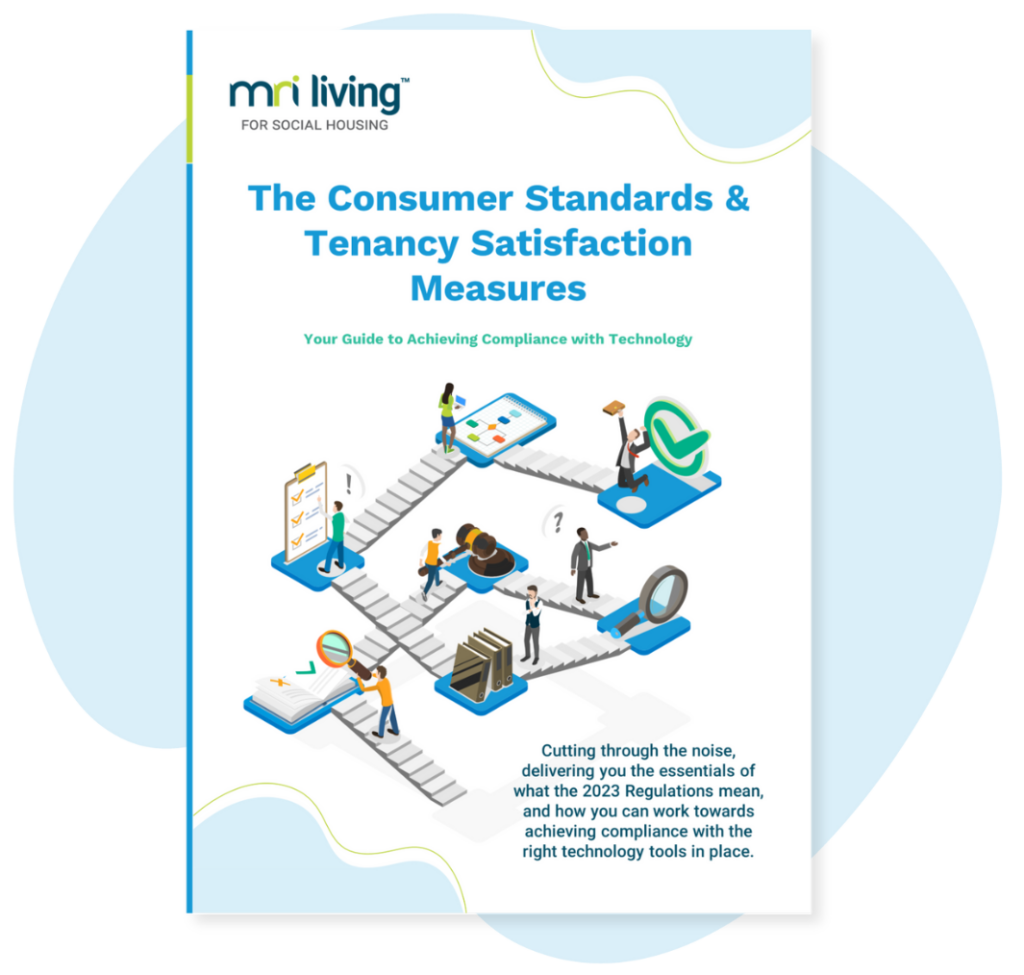Building Safer Neighbourhoods
The publication of the Charter for Social Housing Residents last year has primed housing providers and the organisations like ours that serve the sector, to prepare for changes that will improve social housing residents’ experiences through more explicit tenant satisfaction measures. As set out in the Charter, landlords will be expected “to report to every tenant on such matters at least once a year, if not continuously using technology.”
The Charter begins with the damning statement: “Tenants in social housing are more likely to be victims of crime and experience antisocial behaviour.” The causation between the two is a far more complex picture. Antisocial behaviour can severely impact the quality of life of residents and strategies aimed at ensuring that those experiencing it feel listened to and supported are set to be made central to the housing provider’s remit.
The National Housing Federation’s Great Places programme evidences a link between deprivation, poverty and antisocial behaviour. Many of the measures set forth will rightly compel housing providers to have clear routes for residents to report and have their cases resolved in a timely and transparent manner. However, addressing root causes of antisocial behaviour in the community will require the same drive from legislators across sectors and services to reduce deprivation and poverty, in order to build safer neighbourhoods and strengthen the frameworks with which to deal with this issue.
Antisocial behaviour measures predicted to be announced:
- Responsible Neighbourhood Management
- The transparent reporting of how the above is achieved
- A public information drive to educate tenants on “Community Trigger” arrangements
- Addressing the needs of some perpetrators that may be suffering from poor mental health or in need of other support
- A possible audit on in-house training given to antisocial behaviour teams regarding the “awareness and understanding” of mental health issues
- Public space protection amendments to be made to local design codes to encourage “designing out crime” from neighbourhoods
- For social housing providers to identify vulnerable tenants with regards to ‘cuckooing’ and county lines following successful interventions by landlords to protect residents at risk of being exploited by gangs
- To support residents to “feel safe in their homes, without the stress, fear and tensions that antisocial behaviour and crime can cause”
What are the current antisocial behaviour responsibilities of social landlords?
Generally speaking, all landlords of any type are not responsible for the behaviours of individual tenants. In addition, a case in 2009 involving Hounslow Borough Council ruled that local authorities do not owe a duty of care to protect individuals from the criminal behaviours of others unless they assume a responsibility of care, for example any ward of the state.
One of the main capacities housing providers have to protect their residents is by choosing to offer homes to tenants that will enrich the health and wellbeing of the community as a whole. Social landlords and local authorities currently have the right to refuse tenancy if antisocial behaviour is a concern. Alternatively, they can choose to give individuals a fair chance using an Acceptable Behaviour Contract alongside a tenancy agreement to protect community safety. In 2019, it was made compulsory for antisocial behaviour policies to be published, alongside the routes that residents can take if they find their experience lacking.
A local authority area could have excellent processes behind the scenes to effectively manage a case review, but if their portal is bad, it’s all a waste of time because victims will never know it exists, that they can use it, or feel able to access it.
The Victim’s Commissioner, 2019
The case for Case Management
According to the Home Office, for residents of social housing experiencing antisocial behaviour, having consistent and open communication about what was being done to address the issue and even what could be done was appreciated, even if investigations resulted in no further actions.
In 2019, a report from the Victim’s Commissioner and Nottingham Trent University highlighted the importance of antisocial behaviour incidents not being treated as a standalone event. When recorded thoroughly, the cumulative effect in these cases can be properly investigated by housing officers, as well as the police and help to reveal any underlying causes of the behaviour. This is especially important, as it’s estimated that less than a third of incidents are reported to local authorities, housing providers and the police. As such, having as many fragments of a case to hand can help reveal the bigger picture.
Our MRI Streetwise solution supports this approach to connecting incidents in order to get a view of the wider situation. Using the system, a user has access to all information available to them in one secure place. Case history, notes and linked cases to the perpetrator and victim are all there at the click of a button.
For Chelsea Kelly, Head of Community Safeguarding at Poplar HARCA, “Streetwise has enabled us to look at cases in a different way. In one case we had a complaint from a neighbour about noise nuisance in a property and this was logged. After reading the complaint and the noise that was being reported, the Officers decided to look into the history at the address. As the Antisocial Behaviour module is linked in with the Domestic Abuse module, we could see that there had been a historical case of domestic abuse at the address. Immediately this made us change our approach and we reached out to the tenant living in the property. Rather than taking enforcement action against the noise we were able to put support mechanisms in place for the tenant.”
This was a really important outcome, as whilst neighbours may not understand what is happening in the household, we had a better understanding and were able to help and support rather than enforce.
Chelsea Kelly, Head of Community Safeguarding, Poplar HARCA
CASE STUDY: Nottingham City Homes, Tenancy Sustainment Strategy
Between 2016-2019, Nottingham City Homes (NCH) undertook an antisocial behaviour social impact evaluation, which evidenced that proactive antisocial behaviour case management had a positive impact on their residents. For the organisation, this reduced tenancy turnover by strengthening a victim’s sense of belonging to their community, a factor which can be damaged by experiencing antisocial behaviour.
At the time of reporting their experiences, 59% of antisocial behaviour victims wanted to move from their home. Following interactions with the housing teams and the case management model, that number dropped to 30% and only 9% actually ended up moving. Those who had reported also felt more connected to their neighbourhood following the end of their case, in line with NCH average figures.
Antisocial behaviour reporting in 2020
Something that will skew antisocial behaviour reported rates in the coming years will be the impact of the 2020 COVID-19 crisis. More time at home has meant some residents notice others’ behaviour far more than previously. Reported domestic abuse incidents have skyrocketed and due to schools and leisure facilities being closed as well as a lack of access to work, young people may have been gathering more in public places. Further impacting figures for antisocial behaviour are individuals reporting those breaking COVID-specific rules. All these factors will conspire to make 2020 unique in its antisocial behaviour reporting.
Greg Andrews from our social housing team spoke to Streetwise user, Wheatley Group following the first UK lockdown of 2020. They “told us that over the 10-week period of the first lockdown they had seen 2,000 antisocial behaviour cases reported, which equates to approximately the total number of cases they would expect in a whole year.”
In Worthing and Adur, councils normally dealing with 80-90 antisocial behaviour cases a year saw a 100% increase in 2020. In some cases, these were as simple as the complaints of victims and witnesses to a neighbour dispute or noise pollution offences, both of which might need only minimal interventions of community protection by local authorities and housing associations. In some circumstances more serious incidents like youth offending, criminal offences and hate crimes may need the involvement of local police and more robust legal action.
Keeping a record of all these incidents can help identify the victims and perpetrators most in need of intervention. Case management can also serve to identify ‘hotspots’ of antisocial behaviour to inform strategies for how to ‘design out’ unwanted behaviours to build safer neighbourhoods.
In the future, alongside open communication, strong partnerships should be established to support resident organisations and activities, ensuring that residents’ insights and concerns are listened to in order to build safer neighbourhoods free from antisocial behaviour. The momentum caused by genuine and continued tenant involvement will do more to undermine poor behaviour within communities and build strong ties across neighbourhoods than leaving residents isolated from decisions made about their own lived environment.
The Government’s Social Housing White Paper highlights the impact that the COVID-19 pandemic has had on reinforcing the need for a decent and safe home. Tackling the issue of antisocial behaviour, domestic abuse and helping vulnerable people is vital, and we at MRI Social Housing are ready to support the sector with the right solutions.
Greg Andrews, MRI Social Housing
The Consumer Standards and Tenancy Satisfaction Measures: Your Guide to Achieving Compliance with Technology
Cutting through the noise, delivering you the essentials of what the Consumer Standards and Tenancy Satisfaction Measures 2023 Regulations mean, and how you can work towards achieving compliance with the right technology tools in place. New regulatio…

